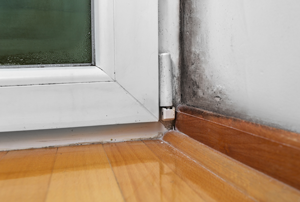Climate Adaptation – Indoor Fungi, Mold and Health
 Extreme weather conditions associated with climate change, such as more frequent and intense storm events, may lead to breakdowns in the physical barriers between outdoor and indoor spaces of homes and buildings. The deterioration of barriers may allow water and moisture to permeate. Damp conditions are ideal for the growth of indoor fungi and mold, increasing the likelihood of occupants’ exposure and resulting health effects.
Extreme weather conditions associated with climate change, such as more frequent and intense storm events, may lead to breakdowns in the physical barriers between outdoor and indoor spaces of homes and buildings. The deterioration of barriers may allow water and moisture to permeate. Damp conditions are ideal for the growth of indoor fungi and mold, increasing the likelihood of occupants’ exposure and resulting health effects.
Exposure to indoor fungi and mold may trigger symptoms similar to hay-fever, including:
- Headaches
- Sneezing
- Runny nose
- Red eyes
- Skin rashes
Those who are allergic to indoor fungi and mold may experience asthma attacks.
